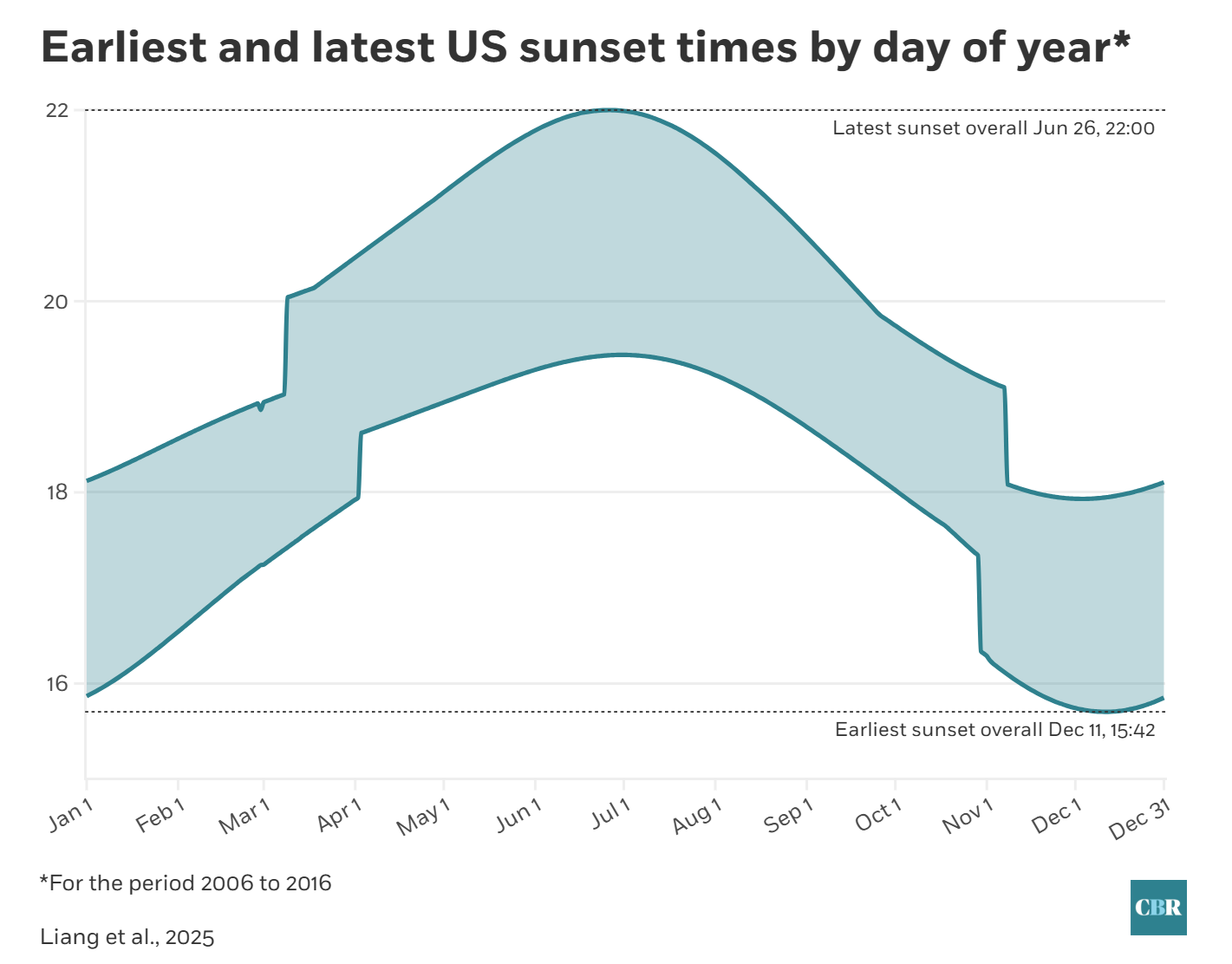Companies should consider incorporating environmental factors into pricing strategies, research demonstrates.
A consumer in a drugstore reaches for a bottle of shampoo, and then looks at the price tag before putting it back on the shelf. A host of factors might affect their price sensitivity in that moment. Maybe they’re worried about losing their job. Maybe they think a cheaper shampoo would be just as good.
Or maybe the sun sets late that day. As unlikely as it sounds, sunset time has a marked effect on consumption behavior and willingness to pay, a study suggests. Tsinghua University’s Yitian Liang and a team of researchers find that each hour of extra daylight before sunset can affect what people are willing to pay for a broad range of household goods. In their study, it increased price elasticity by nearly 5 percent, on average.
A body of research suggests that the onset of night has a direct impact on human behavior. Studies have shown that the change to daylight saving time can cause or influence a slew of things from traffic accidents to academic performance to workers’ earnings.
Working off the hypothesis that fatigue and sleepiness triggered by the setting sun might also reduce people’s willingness to take chances or even make purchases, Liang and his coresearchers looked at the impact of changes in sunset times on price sensitivity.
A natural experiment
The fact that sunset times differed by season and location gave researchers a way to analyze how those times affected consumer behavior.

The researchers analyzed US household purchasing decisions across 19 grocery categories between 2006 and 2016, using NielsenIQ data housed at Chicago Booth’s Kilts Center for Marketing. They looked at purchase, timing, and location information for about 60,000 households, isolating the effects of sunset time.
The study finds that across a broad range of household goods, consumers became more sensitive to price as the sunset time became later. That held for butter, cleaning products, coffee, pizza, shampoo, and more.
“Sunset is a natural environmental factor experienced by all consumers that increases price sensitivity by a nontrivial amount,” says Liang. That should spark interest in other environmental factors such as sunrise time, total daylight hours, and temperature changes “that can provide valuable insights for managerial practices.”
Specifically, the researchers urge companies and decisionmakers to integrate more of these environmental factors into the algorithms used to set prices and even run personalized promotional campaigns.
“Say you are a national manufacturer running a nationwide campaign,” says Liang. “Knowing that sunset times impact price sensitivity, you are in a better position to modulate your content and delivery according to the time of the day to optimize their impact and efficacy.”